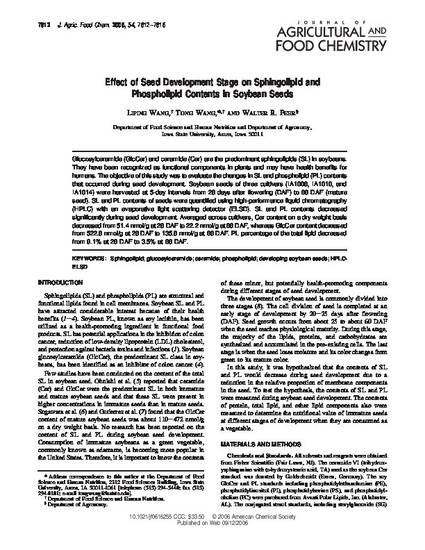
Glucosylceramide (GlcCer) and ceramide (Cer) are the predominant sphingolipids (SL) in soybeans. They have been recognized as functional components in plants and may have health benefits for humans. The objective of this study was to evaluate the changes in SL and phospholipid (PL) contents that occurred during seed development. Soybean seeds of three cultivars (IA1008, IA1010, and IA1014) were harvested at 5-day intervals from 28 days after flowering (DAF) to 68 DAF (mature seed). SL and PL contents of seeds were quantified using high-performance liquid chromatography (HPLC) with an evaporative light scattering detector (ELSD). SL and PL contents decreased significantly during seed development. Averaged across cultivars, Cer content on a dry weight basis decreased from 51.4 nmol/g at 28 DAF to 22.2 nmol/g at 68 DAF, whereas GlcCer content decreased from 522.8 nmol/g at 28 DAF to 135.8 nmol/g at 68 DAF. PL percentage of the total lipid decreased from 9.1% at 28 DAF to 3.5% at 68 DAF.
Available at: http://works.bepress.com/walter-fehr/1/

Posted with permission from Journal of Agricultural and Food Chemistry, 54, no. 20 (2006): 7812–7816, doi: 10.1021/jf0616255. Copyright 2006 American Chemical Society.